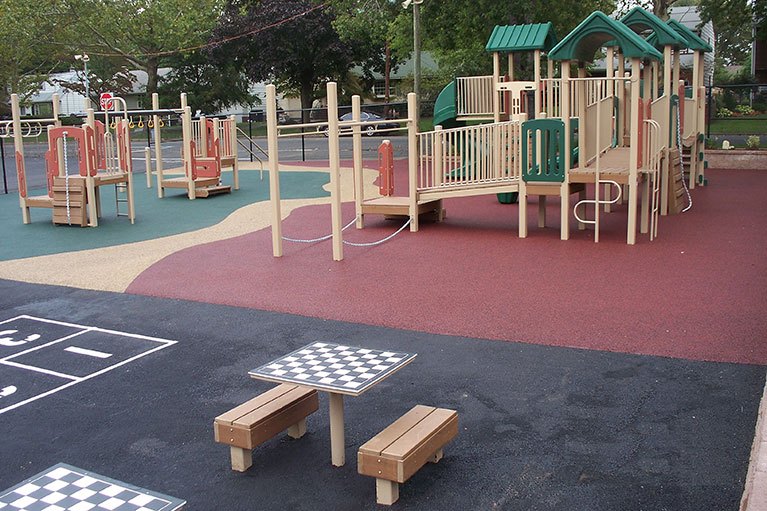If you can recall from your own childhood, playgrounds are an extremely important part of being young and growing up. They are a place of unbridled play, imagination, socializing, getting stronger physically, and testing limits. And, they are just plain fun. However, they are also a place where lots of children get hurt. It is important to bear all of this in mind when making a decision regarding obtaining playground surfacing services. Your ultimate selection should be an expert in all these areas of concern.
The United States Consumer Product Safety Commission (CPSC) estimates that over 100,000 children annually get hurt enough to require a visit to the emergency room due to contact with hard ground or surfaces. In years gone by, playground surfaces were limited mostly to hard grass, gravel, or concrete. These materials have now become almost entirely outmoded because they accounted for many, many injuries to children from falls and hard landings. Sometimes traumatic brain injuries (TBIs) and even deaths were caused. Because of this, the CPSC strongly recommends against their use as playground ground materials. And again, this is why your choice for providing playground surfacing services must be highly competent.
Further, the Americans with Disabilities Act (ADA), which governs public playgrounds, requires that ground cover materials must accommodate all people, including physically challenged people who have mobility and footing issues which would include people on crutches or in wheelchairs. This inclusivity is not an option – it’s the law.
This leaves us with several materials that are both safe and inclusive of all. Your playground surfacing services provider can guide you through the maze of concerns to help you make the best choice. The choice of which one to select depends on several variables: initial (purchase) cost, installation cost, ongoing maintenance cost, long-term durability, visual appearance, degree of safety, and degree of ADA compliance. Bear in mind that no matter other considerations, the ground cover must be ADA-compliant and absolutely must be safe. They fall into two major categories of ground cover: loose fill and unitary.
Loose fill materials are just what they convey – they are installed by hand or “blown in” creating a level area over the entire playground. They include rubber mulch, engineered wood fiber (EWF) and playground sand. EWF looks like regular mulch for landscaping, but it is manufactured and certified specifically for use as a playground surface.
Loose Fill Surfacing
Loose fill surfacing does provide excellent protection from falls and has a lower initial cost than several other options, since it is less costly to manufacture and is simple to install.
However, it also has some significant disadvantages: although EWF and rubber mulch are ADA compliant, it makes it more difficult for children on crutches or in a wheelchair or other assisted-mobility device. Also, because it is loose, it tends to get kicked around (displaced) by playing children, so it requires frequent maintenance to stay within safety and ADA guidelines. Since it is loose, things like shards of broken glass and animal waste can become buried within it and requiring it to be replaced/replenished from time to time. Although sand is an acceptable safety surface that is mostly used on beaches, it requires a mode of access, so it is ADA accessible to the play unit.
Unitary Surfacing
Unitary surfaces are continuous, unbroken, smooth, seamless surfaces (like household carpeting). Unitary surfaces include Poured-in-Place (PIP) rubber, interlocking rubber tiles, and synthetic grass with protective under-padding to help protect against falls. Unitary surfacing has some significant advantages: while its up-front cost is higher than loose fill surfacing, it can be cheaper in the long run due to its high durability and low maintenance costs. It is also both ADA-compliant and CPSC-compliant: i.e. it is both quite safe and guarantees complete accessibility and ease-of-use for physically challenged children and adults.
Further, far less maintenance is required, and the surface is “playable” throughout all four seasons of the year. Also, Poured-in-Place and interlocking rubber tiles come in a variety of colors, shapes and designs to make the playground more attractive to children and parents.
Here at Picerno Giordano, we have many years of experience with playground surfacing and would be happy to help you make the right choice for your particular playground application. Contact us to schedule an appointment today!

